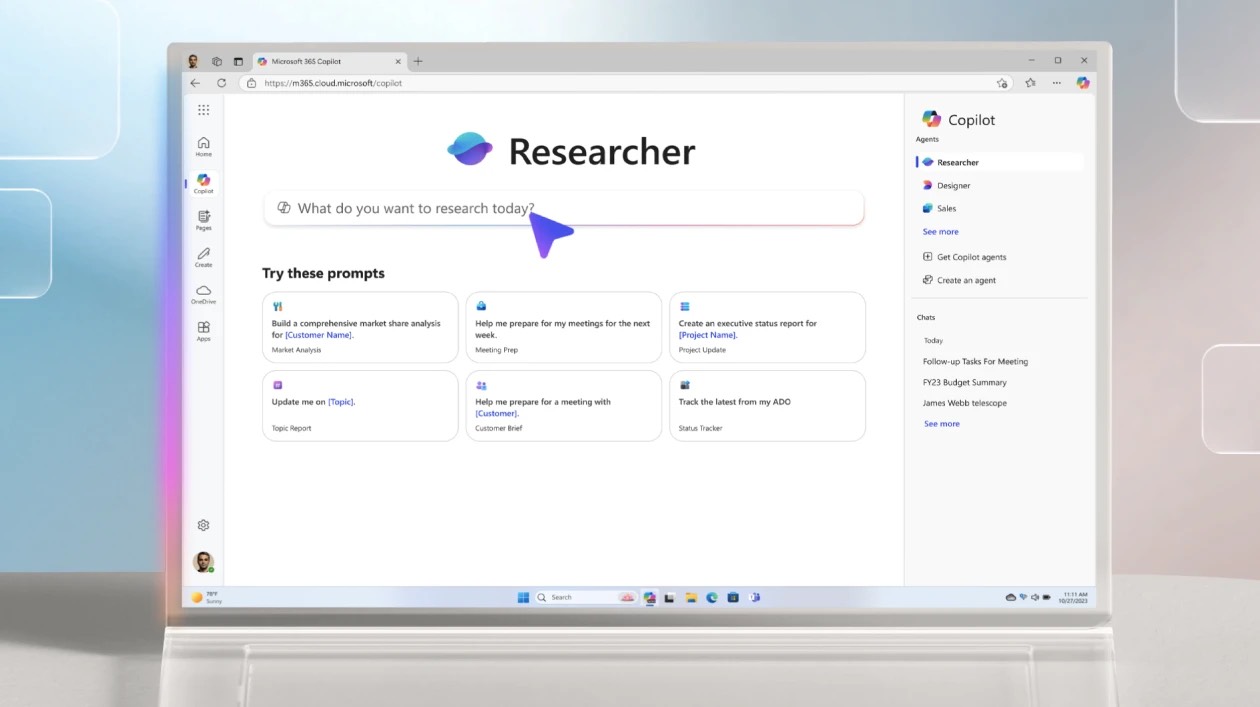Microsoft has unveiled a set of enhancements to its Copilot AI, bringing a new level of analytical and research capabilities to its business users. The company is rolling out two advanced AI agents—Researcher and Analyst—designed to navigate complex workflows and transform how organizations handle data and decision-making. With these additions, Microsoft is signaling that AI in the workplace is no longer just about automation; it’s about providing expertise on demand.
Researcher and Analyst
At the heart of this expansion are Researcher and Analyst, two distinct AI models designed to assist businesses in distinct yet complementary ways. Researcher, built with OpenAI’s deep research AI model, is designed to tackle multi-step investigations, aggregating information from internal and external sources. By integrating with third-party data platforms like Salesforce and ServiceNow, Researcher is poised to offer companies a more comprehensive view of market trends, competitive landscapes, and internal business intelligence.
Analyst, on the other hand, is tailored for in-depth data analysis, leveraging OpenAI’s o3-mini reasoning model. Microsoft claims that Analyst can think like a skilled data scientist, using step-by-step reasoning to process raw data, generate reports, and even execute Python scripts to refine insights. The tool’s ability to structure unorganized datasets into coherent financial projections or consumer behavior patterns could significantly streamline workflows for teams reliant on data-driven decision-making.
The Role of Deep Reasoning and Agent Flows
With the introduction of deep reasoning capabilities and agent flows, Microsoft is looking to take AI beyond simple task execution. Deep reasoning enables AI agents to process information more methodically, allowing them to handle ambiguous or complex business problems that require a level of analytical depth typically reserved for human professionals. Instead of merely generating responses based on predefined algorithms, these models consider multiple variables, context, and nuance before delivering insights.
Agent flows, another feature now integrated into Copilot Studio, provide businesses with a way to automate processes while maintaining a level of adaptability. These rule-based workflows can manage tasks such as directing customer feedback to appropriate teams or dynamically prioritizing sales inquiries based on urgency. Microsoft’s vision is to create AI agents that not only respond to requests but anticipate needs, adjusting workflows in real time based on changing business conditions.
Image source: Microsoft
The Road Ahead for Microsoft’s AI Integration
Microsoft’s latest Copilot updates are expected to roll out to select users in April, marking the next step in its ongoing efforts to integrate AI across its enterprise ecosystem. The challenge ahead lies in ensuring these AI-driven tools can truly enhance productivity without adding unnecessary complexity. While Microsoft presents Researcher and Analyst as groundbreaking advancements, the real test will be in their execution—whether they genuinely provide meaningful, time-saving insights or simply add another layer of AI-powered bureaucracy.
As AI’s role in the workplace continues to evolve, Microsoft’s approach highlights the shifting focus from automation to augmentation. With Researcher and Analyst, the goal is not to replace human expertise but to enhance it—enabling professionals to make faster, more informed decisions. Whether businesses will fully embrace these tools remains to be seen, but one thing is clear: AI in the workplace is no longer just about getting things done; it’s about thinking smarter while doing them.

